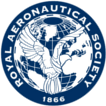(first published in UAV special edition of Aerospace International, September 2009 - one of two nominations for Aerospace Journalist of the year awards 2010)
Now that portable and hand-launched UAVs have become established as valuable military assets, work is underway to develop smaller and smaller designs. BILL READ reports on the technological challenges faced in the incredible shrinking world of MAVs and NAVs.
Large-sized UAVs are now well established as important military platforms, used mostly for long-range intelligence, surveillance and reconnaissance but also for an increasing number of other roles, including combat and logistical transport. In recent years, there has also been an increase in the use of smaller, shorter range and endurance tactical surveillance and intelligence-gathering UAVs which can be carried by troops in the field and launched from guns, catapults or by hand.
However, military and civil users have begun looking at the potential of even smaller unmanned platforms, from micro air vehicles (MAVs) measuring less that 15cm (6in) across, down to nano air vehicles (NAVs) the size of an insect. Equipped with a video camera or a sensor, such UAVs could be used for a multitude of roles, including surveillance, reconnaissance, targeting, battle damage assessment, air or artillery spotting, communications relay, detection of mines, warning downed pilots of enemy search parties, jamming enemy communications, detecting hazardous substances or acting as decoys to overwhelm missile targetting systems with multiple targets. MAVs capable of hovering and vertical flight could be used to search buildings in urban combat and counter terrorist operations or provide real-time information from remote, dangerous or difficult to observe locations with complex topographies, such as mountainous terrain with caves, heavily forested areas, confined spaces and high concentrations of civilians. Proposals have also been made for NAVs which are carried and launched from larger UAVs.
One of the advantages of a small UAV, compared to a large unmanned or manned platform, is that it is much cheaper to operate. It is also easily portable and does not have to be deployed from an airport. Being small and light, such UAVs can land without being damaged and are easily recoverable. Miniature UAVs have the additional advantages of being able to fly into more restricted spaces, as well as being less detectable to an enemy. A nano UAV could even go inside buildings or rooms without being detected.
Design challenges
Micro and nano UAV designers face formidable engineering challenges, with many problems already solved in larger UAVs having to be tackled all over again in a smaller scale. New systems have to developed which are not only smaller and lighter but, in some cases, more sophisticated than their larger counterparts.
Most MAVs are designed with either fixed or rotary wings. Each type has different advantages and disadvantages. Fixed-wings allow MAVs to fly for longer but are less manoeuvrable. Rotary-wings allow hovering and movement in any direction, at the cost of shorter flight time. Work has also been done with very small UAVs to fit flapping wings in imitation of birds and insects. Flapping wings offer the most potential for miniaturisation and manoeuvrability but are currently less efficient than fixed and rotary wing designs.
One major issue is that on control. Trying to fly a MAV remotely by a human operator is not practical as the aircraft is either too small to fit a powerful enough transmitter or could only be operated at short distances within visual range. Research has therefore been concentrating on technologies to enable MAVs to fly autonomously. Larger UAVs have already been able to do this for some time, with many platforms being fitted with autopilots which use a combination of radar, Global Positioning Service (GPS) receivers and inertial measurement units (IMUs) to determine their position and a series of control algorithms to navigate and avoid obstacles. Such UAVs can operate for long periods of time without human intervention, with human control only needed for instructions and directions rather than flying.
However, MAVs have a different set of conditions to satisfy. While miniaturised sensors and autopilots have been developed that enable small UAVs to fly at high altitudes where there is space to manoeuvre, many users want MAVs that can fly very close to the ground in complex terrain, such as mountains, woods, along streets or even inside buildings. This poses problems, as sensing and control systems used on larger UAVs are not practical, as GPS is not accurate enough for low-level flight and a miniature radar cannot provide sufficient depth perception.
To tackle the problem, scientists have been taking ideas from other small flying animals, such as insects and birds. New sophisticated optic flow sensing and control techniques are being developed that enable MAVs to maintain altitude control and follow terrain which are small enough to fit inside a MAV and light enough to still enable it to fly.
Another hurdle to be overcome is that of aerodynamics. An MAV is much more prone to turbulence and wind gusts than a larger UAV and autonomous control systems must be able to compensate for this to stop the aircraft crashing — at the same time as flying it towards its mission. This is difficult enough for fixed or rotary-wing MAVs but those that are modelled on flapping birds, bats or insects also have a whole new set of aerodynamic problems to overcome. Such flights are highly unsteady, as the aerofoil has constantly changing lift, drag and wing tip vortices characteristics, depending on its position, speed and shape.
Keep on flying
Then, there is the problems of power. This is needed both to keep a MAV flying and to operate its systems. Fixed-wing MAVs need power to keep moving forward while rotary- and flapping-wing platforms need enough to fly and stay in the air. An MAV engine needs to be small, lightweight and efficient. Electric motors have been developed that meet this requirement but they require high energy density power sources. Lithium batteries have problems providing enough power for a sufficient period of time but researchers have been working on new methods of integrating structural and energy storage systems. One solution is to build MAVs from composite materials that also acts as a battery cell (AeroVironment’s Black-Widow MAV is powered in such a way). Another solution is autophagus (self consuming) structure fuel; solid fuel components which can be included as part of a structure until they are transformed or directly consumed for propulsion. A variation on this idea is variform structure power: fuel elements carried in elastic wings which collapse but can still fly as the fuel is used up. The US Naval Research Laboratory has been working on such projects.
Micro air vehicles are already being used in military and commercial operations: AeroVironment Wasp (left), Draganflyer X6 (centre) and Honeywell MAV (right).
Another possible power source are hydrogen fuel cells. In 2007 a consortium of US and Singapore organisations developed a small hydrogen cell-powered UAV called Pterosaur which established a new world record in 2007 when it flew for 78 miles (128km) across California. A further promising source of power is solar energy which has already been used successfully on a number of larger UAVs. Since flying uses up a lot of energy, NAV researchers have also been looking at the possibilities of ‘perch and stare’ UAVs which can land to recharge. Work has also been conducted on beamed microwave energy. This requires a multi-directional antennae to track the UAV and send a microwave beam which it then receives, rectifies and uses the energy to power its motor. However, there are drawbacks to this approach, as recharging with microwaves can only be done at short distances and within line of sight.
An even more radical idea has come from the US Air Force Research Lab (AFRL) in Dayton, Ohio, which has worked on an electric-powered MAV spy plane that can ‘harvest’ energy by attaching itself to a power line. So as not to attract attention, the MAV is designed to collapse its wings and hang limply on the cable like a piece of wind-blown rubbish. However, electrical engineers were sceptical of the idea, claiming that the UAV would either short-circuit the power lines causing them to cut out or discharge sparks which would give away its position.
Nano air vehicles keep getting smaller: AeroVironment’s hummingbird-inspired Micro Air Vehicle (left), Lockheed’s Samarai flying seed NAV compared to a real maple leaf seed (centre) and Harvard University’s Robofly robotic ornithopter (right).
Work was also done at MIT during the 1990s on a 2cm silicon microturbine centrifugal-flow ‘jet’ engine for miniature UAVs which burned natural gas using a single turbine disk for compression and a single disk for exhaust rotation but it was never successfully implemented.
Micro systems
Powering and flying MAVs are just part of the problem. Researchers have also been working on the challenge of miniaturising navigation, communications and sensor systems which can be carried by a MAV with a small and compact payload. Such systems must not only be small and light but also must be designed so as not to interfere with each other’s operation while in close proximity.
As well as auto-pilots for autonomous flight, transponders or repeaters for wireless communication, MAVs also need high-quality sensing equipment, both optical and, in some cases, biological or chemical. Micro cameras often need to weigh less than 10g while providing high definition optical and infrared images with both wide angle and zoom capabilities. They must also be able to operate in a wide variety of temperatures and provide clear images from a fast moving platform.
DARPA challenge
One organisation which has been leading the world in the development of MAVs and NAVs has been the Defense Advanced Research Projects Agency (DARPA), an agency of the US Department of Defense. In 1996, DARPA initiated the $35m Micro Air Vehicle (MAV) Program to develop very small UAVs that could be used for military surveillance and reconnaissance missions. The sole rule for entry was that the vehicle should not measure more than 15cm (6in) in any direction. This initial programme focused on the technologies and components required to enable flight at small scales, including flight control, power and propulsion, navigation and communications. A number of commercial and academic organisations contributed designs but none of the results were developed into a a full-scale programme.
The programme ended in 2001 with the conclusion that a 15cm UAV was not yet of practical military use. Since then DARPA has conducted a number of follow-on programmes, including work on organic air vehicles (OAVs), hovering ducted fans designed to fly to and perch on a vantage point to conduct extended reconnaissance. However, the ducted fan configuration proved problematic as it could not maintain position in high winds. The work on ducted fans added to the development of MAV technology with multi-purpose structures, improved communications systems, micro-electro-mechanical systems (MEMS), advanced sensors and electronic packaging technologies, together with lightweight, efficient high-density power sources. DARPA also initiated a programme to develop NAVs with a wingspan of only 7.5cm (3in). A follow-on programme requires a 10g NAV that can hover for extended periods, fly at forward speeds up to 10m/s and withstand wind gusts of up to 2.5m/s.
Small and smaller
The first DARPA NAV competition resulted in a number of innovative experimental designs, including a 150mm span flying/crawling insect Entomopter developed by the Georgia Tech Research Institute (GTRI), University of Cambridge and ETS Labs propelled by a reciprocating chemical muscle (RCM) which can beat wings powered by a chemical energy source. Meanwhile, Harvard University produced the Robofly, a 3cm wingspan robotic ornithopter which was able to achieve uncontrolled tethered flight. A team from Stanford University worked on 1cm-wide four-rotor mesicopter using microcircuit fabrication techniques but the propeller designs did not achieve desired efficiency and the mesicopter was never able to lift the weight of its own energy source. Scientists at the University of California (Berkeley) developed a micromec
hanical flying insect (MFI), a flying robot weighing less than a paper clip while Lutronix Kolibri built a cylindrical micro-helicopter with rotors at one or both ends. It used vanes moved through the rotor airflow by piezoelectric actuators for flight control and was powered by electric motors or a multi-fuel engine.
As a direct or indirect result of the DARPA initiatives, several MAV and NAV designs have been taken beyond the experimental stage. Honeywell produces a 13in-diameter ducted fan hovering reconnaissance UAV for the US military called the Miniature Air Vehicle (MAV). In early 2008 Honeywell received Federal Aviation Administration (FAA) approval to operate a civilian version, gMAV, in the national airspace system and its initial application is expected to be with the police department of Miami-Dade County, Florida.
UAV manufacturer Draganfly makes a small 10in high by 39in wide, battery-powered Draganflyer X6 helicopter which can record and transmit high-quality video and pictures. Fitted with autopilot and stabilisation software so that it does not crash when being controlled by an operator, the X6 can be flown for up to 20 minutes without payload. The MAV can be fitted with an onboard GPS receiver or barometric pressure sensor to hold and maintain altitude in pre-programmed flight as well as being capable of carrying a wide variety of still photos, high definition video, low-light video or infrared video cameras.
AeroVironment developed the 50g circular platform Black Widow MAV capable of loitering on a mission for half an hour, followed by the Wasp, a battery-powered, radio-controlled 72cm wingspan MAV capable of flying for up to 45 minutes using lithium-ion batteries incorporated within the flying wing. AeroVironment is currently working on a prototype flapping-wing NAV resembling a hummingbird under the second phase of DARPA’s $2.1m Nano Air Vehicle programme. The company won the Phase II contract from DARPA in April this year after it achieved a 20-second controlled hovering flight in December 2008 using a battery-powered Mercury interim test vehicle fitted with flapping wings for both propulsion and control.
A runner up in DARPA’s Phase II of the NAV competition was Lockheed Martin which designed the Samarai flying seed NAV, a 0.07 ounce, remote-controlled NAV similar in size and shape to a maple tree seed. Small enough to be carried in a pocket, the Samarai could be launched from the ground over distances up to 1,000 metres or even by airdrop or a grenade launcher. A tiny, solid two-stage chemical rocket thruster embedded on the blade’s tip gives the flying seed extra range and endurance. While the one-bladed device rotates in flight a nano camera will provide a stable forward view and transmit real-time images back to a small, hand-held display. The seed would be fitted with an on-board stability and guidance telemetry together with communications, navigation, imaging sensors, a power source and a payload module the size of a 2g aspirin tablet — which will be interchangeable based on mission requirements, such as chemical and biological detection, infrared surveillance and other purposes.
MAV Olympics
To encourage the development of MAVs, the annual European Micro Air Vehicle conference and exhibition stages indoor and outdoor flight competitions to test performance and endurance. The 2009 event held in Delft in September will be holding four competitions, as follows:
1. Outdoor autonomy mission (illustrated top left): use one or more MAVs to perform multiple missions, including finding a truck with ‘victims’ in a search area, flying through arches and against balloons, and releasing a paint ball in the right drop zone. There is a time limit, so competitors are encouraged to use multiple MAVs working together.
2. Outdoor endurance mission: A long endurance mission in which the MAV has to drop a paintball payload far from the launch zone.
3. Indoor autonomy mission (illustrated lower right): A complex mission requiring a MAV to fly into and out of a small house, recognise patterns, pick up a small object and perform a precision landing.
4. Indoor dynamics mission: An indoor test of speed and agility in which competitors fly MAVs in figures of eight around two poles.
Cyborg insects?
A more radical solution is to do without a mechanical NAV altogether and use live insects as sensors. DARPA has initiated the HI-MEMS (hybrid insect micro-electro-mechanical systems) programme with the aim of implanting micro-mechanical systems inside insects during the early stages of metamorphosis. The aim of MEMS is to control the motion of insects by electrical stimulation of wing muscles through a combination of GPS, RF, optical or ultrasonic signals-based remote control. The ultimate and somewhat incredible vision is for the military to be able to control swarms of insects fitted with video, audio or chemical sensors to perform reconnaissance missions beyond the reach of ordinary NAVs.
An illustration of a cyborg beetle microsystem developed by the University of Michigan showing implanted system (a), visual stimulator (b) and beetle in flight (c).
International initiatives
Another country at the forefront of UAV development is Israel which has already produced a wide variety of large and small UAV designs. The Israeli MoD Defense Research & Development Directorate (DRDD) is currently encouraging the development of micro systems technology. In 2003 Israel Aircraft Industries developed the 250g, hand-launched, saucer-shaped Mosquito 1 micro UAV fitted with a miniature video camera.
Several European countries are also working on miniature UAVs. The French defence procurement agency (DGA) is funding a number of projects, including a 1.6m three-year university contest for miniature UAV designs together with a request for proposal (RFP) to industry for a 40cm miniature UAV demonstrator. The DGA is also funding a 5m four-year project called Remanta led by the French defence aerospace research agency ONERA to develop ornithopter, vibrating wings and other micro-UAV concepts capable of entering buildings for urban warfare applications.
Engineers at TU Delft University in The Netherlands have been working on a series of increasingly smaller dragonfly-shaped NAVs called DelFly. The first DelFly I in 2005 had a 50cm wingspan which was reduced in 2006 to 28cm on the DelFly II. The latest version is the 3g DelFly Micro which has a wingspan of only 10cm. Fitted with a 0.5g camera, this micro air vehicle can fly for three minutes at speeds of up to 5m/s. The next stage is the even smaller 1g DelFly NaNo measuring only 5cm. Also in The Netherlands, aerospace engineering students at Delft University of Technology working with the Experimental Zoology Group of Wageningen University have developed the RoboSwift micro-aircraft which made its first flight in March 2008. Inspired by the swift, the NAV is fitted with 50cm morphing wings and is designed to study birds or conduct surveillance of groups of people or vehicles in the event of accidents, demonstrations or in law enforcement and surveillance. Development of the RoboSwift is being financed by The National Police Services Agency (KLPD).
Other countries working on NAVs include Turkey where Baykar Machine has Bayraktar mini UAV system, EMT’s Aladin system in Germany, a hovering mini-UAV produced by Singapore Aerospace Industries, CATIC in China which has a man-portable ASN-15 and A-Level Aerosystems in Russia which produces a ZALA 421-08 flying wing for surveillance against terrorists and smugglers. In 2003 Seiko Epson Corp of Japan reported that it was developing a 2.8in high Micro Flying Robot helicopter MAV fitted with counter-rotating propellers powered by an ultra-thin ultrasonic motor, designed to fly into dangerous or disaster-hit areas, such as buildings flattened by an earthquake
Micro challenges
While some current designs may seem to belong more to the realm of science fiction, there is no doubt that huge progress has been made with the development of miniature UAVs. However, work still needs to be done in a number of areas. On the technology side, the problem of how to power such tiny aircraft for sustained periods of time remains to be solved while further research is also needed to perfect ‘sense and avoid’ systems to eliminate the risk of collisions. There is also still more to be done regarding the regulations that govern the use of MAVs and UAVs, including their operations within civil airspace as well as the latent issue of privacy. It may only be a matter of time before legal objections are raised regarding the unrestricted use of such platforms to spy on individuals or groups.
The phrase ‘fly on the wall’ may soon have a new meaning.








Hi Bill, an extremely interesting read, do you have any video clips of the developing MAVs ?
Alan, you can find videos on youtube at:
The DARPA remote-controlled beetle: http://www.youtube.com/watch?v=hFguLwUT5lg&feature=related
AeroVironmental NAV UAV: http://www.youtube.com/watch?v=Cov7-XWUa18
The RoboSwift: http://www.livescience.com/common/media/video/player.php?videoRef=robo_swift
and Delfy on http://www.youtube.com/watch?v=2hwvnXCOBdY
A good survey on an interesting topic.
The passage on “international initiatives” concerning the French activities however is somewhat outdated, as can be seen by reviewing the article from Dornheim and Taverna in Aviation Week & Space Technology, 08 July 2002.